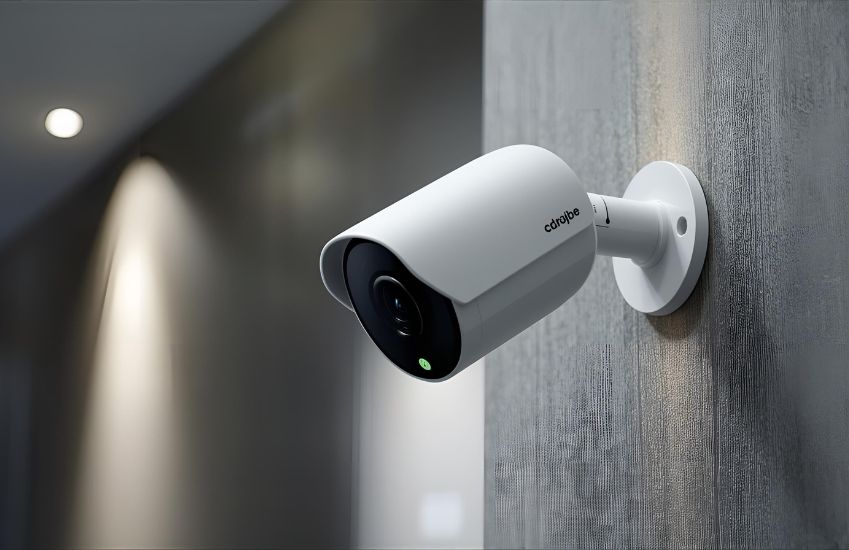Embedding IP cameras has transformed how surveillance systems deliver reliable and modern security solutions. You may wonder how to efficiently embed an IP camera’s live video stream into a web page to monitor your property or business seamlessly. The ability to embed video streams directly allows you to access real-time footage remotely, enhancing your safety measures without complex setups.
Embedding an IP camera enhances reliable and modern surveillance by providing high-quality video, remote access, and easy integration with networks. It supports real-time monitoring and efficient data management, ensuring improved security. With scalable configurations and smart features, IP cameras deliver effective surveillance solutions suited for various environments and security needs.
This blog will guide you through the technical aspects of embedding IP camera streams, including setting up your camera, configuring the necessary ports, and embedding the video stream code on your website. You will also learn how to optimize your setup for reliable performance, helping you leverage modern surveillance technology effectively.
How to Embed Live Video Stream from an IP Camera Using HTML Code

Embedding a live video stream from an IP camera into your website or web page can enhance your surveillance capabilities by providing real-time monitoring access. To achieve this, you need to understand how to stream IP video correctly and embed it using HTML code efficiently.
Understanding Your IP Address and Camera Stream
The first step is to identify the IP address of your IP camera. This address acts as the unique identifier for your device on the network, allowing you to access its live video stream remotely. You will typically find the IP address in your camera’s settings or by using network scanning tools. Knowing the correct IP address is essential to stream directly from your device without interruptions.
Using HTML Code to Embed Live Video
Once you have your IP address, you can use simple HTML code to embed live video stream content on your web page. The best way to embed live video is by utilizing an <iframe> tag or the <video> tag, depending on the stream’s compatibility. For example, if your IP camera supports streaming protocols compatible with browsers, you can embed live video with a line of HTML code that points to the camera’s stream URL.
Leveraging Tools like VLC and OBS for Enhanced Streaming
If your IP camera stream is not natively supported in browsers, you can use software such as VLC or OBS (Open Broadcaster Software) to capture and re-stream your live video. VLC can act as a media player and streaming server, allowing you to access and broadcast your camera feed. OBS can help you customize and manage the video stream, giving you more control over how the live video stream is presented. Using these tools, you can stream directly to platforms or embed live video on your website with greater flexibility.
Exploring IPCamLive and Camera Support Services
For those seeking more straightforward solutions, platforms like IPCamLive provide services that simplify embedding IP camera streams without extensive technical setup. These platforms offer camera support for various models, ensuring you can stream IP video securely and reliably.
By following these steps and utilizing the right tools and HTML code, you will be able to embed live video streams from your IP camera efficiently, enhancing your surveillance system’s reach and functionality.
See more about…360 Degree Surveillance Camera
Configuring IP Address and Port Forwarding for Smooth Camera Streaming

Configuring your IP address and setting up port forwarding are critical steps to ensure smooth and reliable streaming from your IP camera. To begin, you need to determine whether your camera’s network uses a static IP or dynamic IP address. A static IP address is preferable because it remains constant, making it easier to access your camera’s live feed without frequent changes. If your network uses a dynamic IP, consider configuring your router to assign a static IP to your camera within your local network.
Port forwarding is essential to enable external access to your camera’s video stream. By forwarding specific ports on your router, you allow incoming traffic from the internet to reach your camera through the router’s public IP address. This process involves logging into your router’s web interface, identifying the ports your camera uses (often related to RTSP or HTTP streaming protocols), and forwarding those ports to the camera’s local IP address. Enabling port forwarding creates a direct path for streaming video from IP cameras outside your local network.
To stream it to YouTube or broadcast via other platforms, you can use software like FFmpeg or set up an NGINX webserver configured with RTMP support. This setup captures the camera’s video feed and generates a streaming URL that you can embed using HTML code on your website or web page. With the right script and plug-in, you can automate this process, ensuring continuous live video streaming.
Using these configurations, you can capture and stream your camera’s feed securely and reliably, expanding your surveillance capabilities beyond the local network. Understanding how to manage your camera’s URL and network settings will empower you to integrate modern streaming technologies effectively.
See more about…Video Surveillance from Android & iPhone Mobile App
Conclusion
Successfully embedding an IP camera’s live video stream requires careful configuration of your network settings and the right tools to ensure smooth delivery. By understanding how to use RTSP protocols and setting up port forwarding correctly, you can securely route your camera’s feed to your desired destination. Utilizing appropriate plug-ins can simplify the process, allowing you to convert and embed video streams efficiently. Proper configuration not only enhances the reliability of your surveillance system but also ensures that you do not unnecessarily expose your network to risks. With these steps, you can confidently manage your IP camera streams, providing modern and effective surveillance solutions tailored to your needs.
See more about…IP Cameras with Long Range Wireless Bridge
Frequently Asked Questions (Embedding IP Camera for Reliable and Modern Surveillance)
How to embed an IP camera into a web page?
To embed an IP camera into a web page, obtain the camera’s RTSP or HTTP stream URL from its settings. Use an <iframe> or <video> HTML tag with the stream link, or embed via MJPEG/RTSP-to-HTML5 conversion for browser compatibility. Some cameras provide ready-made embed code. Ensure proper authentication and firewall settings for secure access.
What are the 4 types of security cameras?
The four main types of security cameras are dome cameras, bullet cameras, PTZ (pan-tilt-zoom) cameras, and C-mount cameras. Dome cameras offer wide indoor coverage, while bullet cameras are ideal for long-distance outdoor monitoring. PTZ cameras provide flexible control with zoom and movement, and C-mount cameras allow interchangeable lenses for varying surveillance needs, ensuring versatile security solutions.
What is the difference between IP surveillance and CCTV?
IP surveillance and CCTV differ mainly in technology and connectivity. CCTV uses analog cameras connected via coaxial cables to DVRs, offering basic monitoring. IP surveillance uses digital cameras connected through networks, enabling remote access, higher resolution, scalability, and advanced features like motion detection and cloud storage. IP systems are more flexible, while CCTV is simpler and cost-effective.
What is the latest technology for CCTV cameras 2025?
By 2025, the cutting-edge in CCTV technology includes 4K++ ultra-HD imaging, full-colour night vision, deep learning AI for object/behaviour detection (humans, vehicles, loitering), edge computing for real-time analytics on-device, cloud & hybrid storage with encryption, integration with IoT/smart homes, solar & battery-powered units, and quantum-resistant cybersecurity. impulsecctv.com+4
